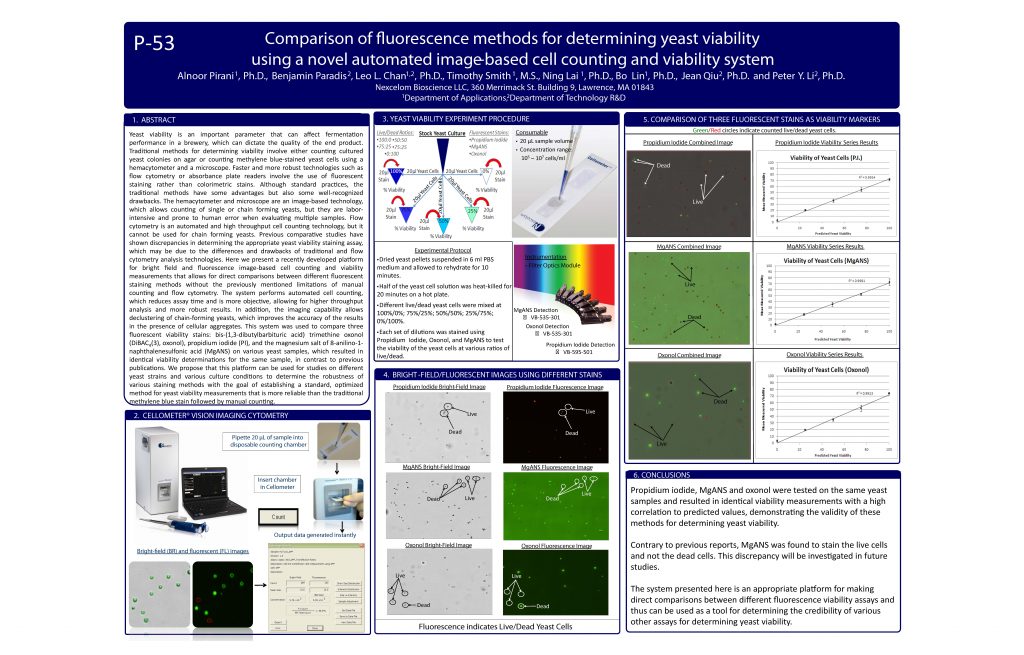Comparison of fluorescence methods for determining yeast viability using a novel automated image-based cell counting and viability system
Alnoor Pirani, Benjamin Paradis, Leo L. Chan, Timothy Smith, Ning Lai, Bo Lin, Jean Qiu, and Peter Y. Li
Yeast viability is an important parameter that can affect fermentation
performance in a brewery, which can dictate the quality of the end product.
Traditional methods for determining viability involve either counting cultured
yeast colonies on agar or counting methylene blue-stained yeast cells using a
hemacytometer and a microscope. Faster and more robust technologies such as flow cytometry or absorbance plate readers involve the use of fluorescent
staining rather than colorimetric stains. Although standard practices, the
traditional methods have some advantages but also some well-recognized
drawbacks. The hemacytometer and microscope are an image-based technology, which allows counting of single or chain forming yeasts, but they are laborintensive and prone to human error when evaluating multiple samples. Flow cytometry is an automated and high throughput cell counting technology, but it cannot be used for chain forming yeasts. Previous comparative studies have shown discrepancies in determining the appropriate yeast viability staining assay, which may be due to the differences and drawbacks of traditional and flow cytometry analysis technologies. Here we present a recently developed platform for bright field and fluorescence image-based cell counting and viability measurements that allows for direct comparisons between different fluorescent staining methods without the previously mentioned limitations of manual counting and flow cytometry. The system performs automated cell counting, which reduces assay time and is more objective, allowing for higher throughput analysis and more robust results. In addition, the imaging capability allows declustering of chain-forming yeasts, which improves the accuracy of the results in the presence of cellular aggregates. This system was used to compare three
fluorescent viability stains: bis-(1,3-dibutylbarbituric acid) trimethine oxonol
(DiBAC4(3), oxonol), propidium iodide (PI), and the magnesium salt of 8-anilino-1-naphthalenesulfonic acid (MgANS) on various yeast samples, which resulted in identical viability determinations for the same sample, in contrast to previous publications. We propose that this platform can be used for studies on different yeast strains and various culture conditions to determine the robustness of various staining methods with the goal of establishing a standard, optimized method for yeast viability measurements that is more reliable than the traditional methylene blue stain followed by manual counting.

